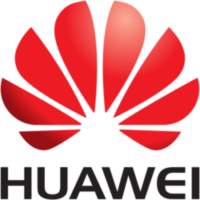Huawei secretly helped the North Korean government build and maintain the country’s commercial wireless network, according to internal documents obtained by The Washington Post and people familiar with the arrangement. Asked about the report, President Donald Trump said on Monday, “We will have to find out.”
Huawei partnered with a Chinese state-owned firm, Panda International Information Technology Co. Ltd., on a variety of projects there spanning at least eight years, according to past work orders, contracts and spreadsheets taken from a database that charts the company’s telecom operations worldwide.
The former Huawei employee who gave the documents to the Post considered the knowledge to be in the public interest.
The documents raise questions about whether Huawei violated U.S. export controls to furnish gear to North Korea. The Commerce Department declined comment; it has investigated alleged links between Huawei and North Korea since 2016, but has not publicly connected the two. Separately, the U.S. Justice Department charged Huawei with bank fraud and violations of U.S. sanctions on Iran. The company pleaded not guilty, reports the Post.
Huawei said in a statement it has “no business presence” in North Korea. Huawei Spokesman Joe Kelly did not dispute the authenticity of documents shared with the company, though he also declined to verify them, according to the account. “Huawei is fully committed to comply with all applicable laws and regulations in the countries and regions where we operate, including all export control and sanction laws and regulations” of the United Nations, United States and European Union, the statement says.
Huawei’s suspected ties to the Chinese government have alarmed U.S. and European security officials; discovery of a link between the tech firm and North Korea is likely to fuel deeper suspicion among Western nations deciding whether to ban Huawei from their 5G networks, according to the account.
Before 2008, North Korea struggled to find multinational companies willing to build a 3G network in such a risky business environment. That led to the creation of the wireless provider Koryolink, which emerged after a secret visit in 2006 by North Korean leader Kim Jong Un’s father, Kim Jong Il, to Huawei’s headquarters in Shenzhen, China. Koryolink was built through a 2008 joint venture between Egyptian firm Orascom Telecom Holding, and the state-owned Korea Post and Telecommunications Corp. Together, they were called CHEO Technology. The Post’s attempts to reach CHEO were unsuccessful.
Panda International, part of electronics conglomerate Panda Group, was a key player. Leaked internal documents show Huawei worked closely with Panda, using it as the conduit to provide North Korea with base stations, antennas and other equipment needed to launch Koryolink. Attempts to reach the Panda Group were unsuccessful.
Huawei was involved in “network integration” and “software” services as well as at least one “expansion” project for Koryolink, the documents show. It also provided “managed service” and “network assurance” services.
The documents show the North Koreans were concerned with foreign spying on regime officials and family members who would be using Koryolink. In 2008, Orascom and Korea Post tasked Huawei with developing an encryption protocol for the network, noting that the government would create its own encryption algorithm, the documents state. There was an agreement that ordinary people would use the international standard mobile phones and special users would use “different mobile phones which will contain [a] locally developed encrypted algorithm,” state the minutes of a 2008 meeting.
Huawei built a test bed in Shenzhen, the documents show. Two sources familiar with the system told the Post that North Korea also intercepted and monitored all domestic and international calls.
July 23, 2019





Reader Interactions